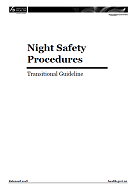
This transitional guideline is to help those working in mental health and secure disability services who use night safety procedures work towards eliminating the procedure.
Night safety procedures is the practice of locking a patient in their bedroom overnight for safety reasons. There is no therapeutic value.
This transitional guideline replaces the Night Safety Procedures document issued in June 1995, which is no longer fit for purpose.
This guidelines sets out the principles, outcomes and criteria to be applied when night safety procedures are used over this transitional period. There are three outcomes.
- The use of night safety procedures will be eliminated from practice by 30 December 2022. Future services will not use night safety procedures.
- Rights of patients and staff are recognised and protected.
- The Ministry of Health maintains oversight of the current use of night safety procedures.
While this guideline has been developed primarily in relation to night safety procedures for patients under the Mental Health (Compulsory Assessment and Treatment) Act 1992, in some instances, these practices are used in intellectual disability hospital level secure services. For this reason, the transitional guideline also applies to hospital level secure services under the Intellectual Disability (Compulsory Care and Rehabilitation) Act 2003.
